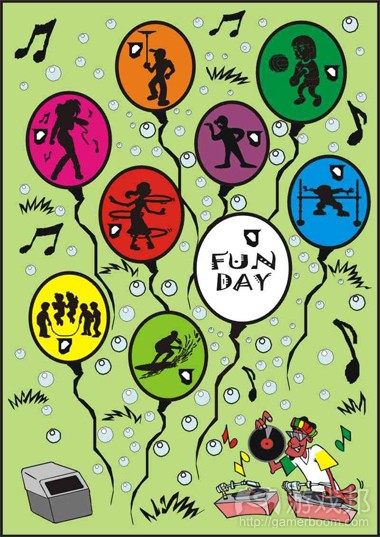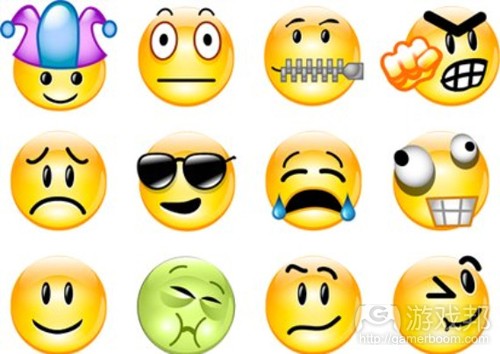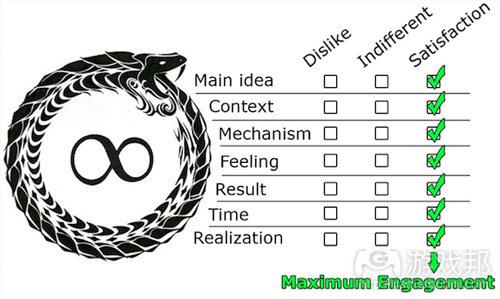从体验的结构分析寻找游戏趣味性来源
作者:Christian Philippe Guay
趣味性是个大家都很熟悉的词,但直至今天仍难以定义。我们确实拥有奇怪的能力,能够理解如何让事物变得有趣,但是对其真正来源知之甚少。数年以来,我向自己提过许多问题:
1、它从何处来?
2、它能够通过何种方式制造出来?
3、趣味性是否具有主观性?
4、是否有可能创造出让所有人都感到有趣的东西?
5、趣味性是否来源于对新事物的了解?
6、相对比新游戏,为何我更喜欢老游戏?
7、我们对趣味性的理解是否正在减弱?
8、参与度与趣味性是否相同?
9、电子游戏未来将如何发展?
10、是否存在统一的趣味性理论?
对于这些问题,我无法从网络的任何文章和书籍中找到合适的答案。但是,调查确实使我更深刻地理解趣味性,因为多数文章或书籍都会列举许多产生趣味体验的因素。
但是,它们从未清晰地解释何为趣味性以及如何创造趣味性。经过数个月的调查,我发现即便我们不理解趣味性的本质及其来源,行业中依然产生了如此多的有趣产品。我们到目前为止所取得的如此成就着实令人惊叹。
于是,我开始思考上述问题的答案。我之前花了数年的时间来寻找答案,但更为重要的是,我低估了自己的体验在解决问题方面的价值。经过15分钟的思考后,我得出了自己对以上所有问题的看法和见解。
正是在此刻,我意识到其实我们对趣味性颇为了解,只是对自己不够了解而已。阅读完这篇文章后,我确信多数人都会为自己对趣味性的了解感到惊奇,会发现真正的问题只是没有将已知的内容串联起来。
趣味性来源于何处?
所有东西的存在都具有一定的结构,包括菜谱、书籍、电影、视频游戏和化学方程式等。我们都知道,趣味性的感觉产生于体验中或体验过后。换句话说,如果能够更好地理解体验的结构,就能够更好地理解趣味性。我们会发现,在创造过程中,结构是创造体验的必要因素。
无论是针对特定目标用户还是基于个人灵感,首先我们都会创造出游戏愿景。有些设计师或许更喜欢将其称为“蓝图”。这个蓝图就是位于脑中或纸上的想法。蓝图无法理解或互动,但这个步骤却是创造体验的核心。
要使蓝图具有互动性,我们需要让它变得能够被人类所理解。如果想法是制作出有趣的敌人,那么我们首先必须制作3D模型。我通常使用“情境”进行描述。在战场上的战斗与在移动电梯上的战斗并不相同,不是吗?有些游戏中含有故事情节。可理解的故事也属于这个层次。
让想法变得可为人们所理解之后,我们就要为其添加“机制”。我们向角色添加血肉,这样他就能以我们设定的方式移动。需要记住的是,所有可理解内容都会强化机制,这也正是为何老式8位游戏不一定比当代游戏更好,即便前者向玩家呈现的是更酷更具创新的游戏玩法。
设计师的最终目标是基于玩家影响世界、AI和其他玩家的工具,也就是以玩家为中心的游戏和挑战。游戏中的背景故事是可理解的故事,但也有某些层次的故事是玩家在游戏过程中创造出来的。
现在,我们的体验有了机制和互动性,接下来需要做的是添加微妙的“情感”层次。我们往往会遗忘这个步骤,但这对创造出优秀和令人深刻的体验至关重要。你是否会向玩家发射火箭弹,使其产生极度的紧张感?你是否会创造出空旷的房间,让玩家知道他需要准备战斗?你是否愿意让玩家感觉到这是个安全或危险的地区?
玩家做出互动行为后,游戏就会根据因果关系呈现直接“结果”。他是否抵挡住攻击?他是否消灭了自己的对手?他是否听到某种音效?他打开宝箱后得到什么宝物?重点在于,要记住挑战是和奖励并存的,而且在设置挑战时就要考虑到奖励。对于体验的创造,还需要些许额外的步骤。
玩家获得结果后,就会知道完成体验所耗费的“时间”。时间观念能够缓和体验的紧张感,营造节奏或重复。
最后,玩家在明白体验所耗费时间后,对整个体验才有了全面的“认识”。当他在脑中记忆这个历程时,会将其质量与以往的其他体验相比较。在这个最终的过程中,玩家还做出了自己的评判。在创造体验的过程中,我们对用户也做出了评判。这是个自然的演变循环,我们都是其中的一份子。
体验的结构
体验的结构由7个层次组成,每个层次都包含一定的内容,以下列举部分范例:
1、蓝图:愿景;游戏设计文件;挑战;预告片
2、背景(游戏邦注:包括所有可理解的内容):2D美术;3D环境;3D模型;3D动画;音乐;音效;特效;菜单;HUD;可理解故事
3、机制:游戏玩法机制;学习曲线;控制;难度曲线;人类工程;关卡设计;可玩故事
4、情感:快乐;愤怒;恐惧;惊讶;悲伤
5、结果:玩家找到新装备;玩家找到捷径;玩家获得分数;玩家解锁新功能
6、时间:紧张;节奏;重复
7、认识(领悟):理解如何游戏玩法机制的运作原理是否对游戏有帮助?我们在故事中有什么新的收获?这个冒险跟10年前的那个相比是否更加有趣?
更为重要的是,要理解一个体验可以由多个小体验组成,也可以成为更大体验的一部分,就像游戏由关卡组成、关卡由游戏玩法序列组成、游戏玩法序列由游戏玩法组成、游戏玩法由动作组成这样的递进关系。层次可以无限大和无限小地划分。
比如:生活;活动;电子游戏;游戏;游戏关卡;游戏玩法序列;动作;控制
这便是微观和宏观间的关系,具有一致性、相对性和不规则性。这也正是分析不同层次会让人感到困惑的原因所在,因为所有层次的位置都会发生改变,所有层次间的关系都是相对的。
参与度的7项原则
我们的7项原则可以被视为让玩家进入更好参与状态的7个线性步骤。如果玩家不喜欢其中一个步骤,就会使她的体验难以继续发展下去。理想情况下,我们希望玩家能够受所有这些步骤的诱导一步步发展下去。简单地说,所有的步骤都应当比之前的游戏、电影、书籍或音乐更好。
当我们体验质量更高的内容时,所获得的趣味性体验也就越好。从根本上来说,参与度使游戏具有呈现其趣味性的潜力。
然而,所有的产品都有自己的强势之处。有些游戏提供更好的视觉效果,有些游戏呈现更好的机制或情感。
要制造出更好的参与状态,呈现的内容越少效果就越好,因为我们添加的细节越多,我们犯错或呈现可能破坏体验的内容的机率就越大。
更为重要的是,制作出的所有内容都必须有个充分的存在理由,理想情况下这个理由应当能够强化其他层面。如果属性没有实际的效果,那么即便给角色增加50项属性也毫无用处。披肩的颜色、形状或移动方式就已经能够传达出大量的信息。
应当记住一点:时间就是金钱。
趣味性是否因人而异?
对于一款游戏,不可能每个人都觉得有趣,游戏总是针对特定群体和用户而设计的。我们能够吸引的这部分群体就是玩家。每个人都是游戏玩家吗?当然不是。
趣味性是主观概念,但并非完全主观。从某个角度来说,因为我们所有人的经历和生活都各不相同,所以有些人觉得有趣的东西,有些人并不一定会觉得有趣。但是,这并不影响我们对体验的构建。如果你理解用户的想法,显然能够以用户为目标将内容制作得更为有趣。
这意味着,如果我们不了解用户,也就无法制作出比用户此前经历更有趣的东西,这样趣味性才变成完全主观的东西。
技能等级不同,趣味性不同
玩家的技能等级也会影响他们体验到的趣味性。正如之前提到的那样,趣味性只是种潜在的东西,玩家的技能越好,他就越能够理解和欣赏内容。
简单地说,用户可以分为以下3种类别:新手玩家;高级玩家;资深玩家
玩家技能等级上的差异不一定是肢体上的,更重要的是心智认知上的差异,因为肢体技能可能因缺乏实践而随时间逐渐变弱。
显然,新手玩家指刚刚接触游戏的玩家,主要关心的是基础内容——“我只想向他人射击”。如果我们为他们设计地图,可能会让他们无法理清头绪。
资深玩家的需求与新手玩家完全相反。他们需要地图,才能调整节奏和利用各种技巧和战略。高级玩家处在二者中间,在这两个极端层面的游戏中都能感受到乐趣。
理想情况下,游戏应当提供能够同时让这3类玩家感到满意的游戏玩法和地图。更为重要的是,多人游戏应当提供根据玩家类别来进行配对的系统。否则,资深玩家会轻易地战胜新手玩家,这会让新手玩家完全感受不到体验中的趣味性。
趣味性不是静态力量,它具有发展潜力
我们无法制作出具有特定程度趣味性的体验。正如之前所述,趣味性与玩家以往的经历和之前接触的所有产品有关。游戏开发者做的就是向玩家提供工具,让他们利用这些工具来体验到某种程度的乐趣。
通常情况下,随着玩家对游戏的逐渐精通,趣味性也会增加。通过技能的提升,玩家会增加对游戏中所发生内容的认知程度。这也就会加强游戏的趣味程度,游戏令人愉悦的原因便在于此。
但是,游戏开发者还必须确保玩家学习游戏的过程不会过于艰难。有些游戏缺乏足够的信息或教程,玩家不理解如何玩游戏并找到其中的趣味性。大量多人游戏都面临这个问题,而这个问题很容易便可以得到解决。
如何提升创作有趣产品的能力?
我们必须明白之前的制作方法,因为不重复之前犯过的错误是很重要的。
如果你想要在制作蓝图方面有所提升,那么你必须研究许多东西。了解现状,预测接下来的趋势,提升找到市场空白处的能力。学习和理解营销和心理学也很有帮助。
如果你想要提升自己制作背景的能力,那么过程或许会更加困难。你需要研究学习艺术、音乐、电影、电子游戏和摄影等内容。
如果你想要制作出更好的机制,那么我推荐你去体验和研究各种游戏、运动和战争艺术。对于所有设计师,我都会推荐他们在一款游戏上花足够时间直至精通。有些东西只有真正体验过才能够正确地理解。事实上,我们对某种体验越精通,对其他类似的体验也就越熟悉,因为这片领域中所有内容都是基于相同的原则。我们意识到,使用的机制都是相同的,只是背景不同而已。通过以上方法,你就能够更容易地制作出有趣的游戏玩法机制或学习如何修改不足之处。
制作出更具情感化的体验可能是最困难的任务,因为对游戏开发者来说这还是种相对较新的概念。如果能够理解哪些内容能够让玩家产生激情,那么势必会对此有所帮助。如果你想要寻找灵感的话,或许可以研究电影、书籍、电子游戏和日报。多数幽默作家知道如何来调侃读者,在故事中添加转折点能够触发特别的情感。
如果你想要提升自己制作结果或奖励的能力,那么电子游戏显然是最佳的参考对象。
如果你想要让人获得非凡的领悟,那至少应当确保这种体验值得一试,而且要比之前体验更好。
我曾经认为,研究当代最棒的游戏会帮助我们更好地理解如何制作出更优秀的游戏。但是,这些游戏往往极具吸引力,可能会使我们不会将注意力放在学习其制作方法上,因为当我们在玩这些游戏时,我们并没有批判地思考它们的构建方式,我们是以玩家的身份来体验这些游戏。然而,如果我们玩那些最糟糕的游戏,那么所有令人产生挫败感的东西都会涌入我们的脑中。于是我们就会知道哪些内容需要提升,这会迫使我们改善创造力,寻找弥补这些问题的方法。
光明的未来
未来将会出现更多有用的游戏,这是行业的发展趋势,我们可以通过许多方法来实现这个目标。主要想法在于,要制作出教育性和娱乐性并存的游戏。这是我们接触过的最简单和最具易用性的媒介。我们在玩游戏的时候不会受伤,因为我们不用冒任何肢体上的风险,所以我们能够不断学习下去。电子游戏是种让用户在短时间内体验上千种东西的简单方法。如果电子游戏成为教育系统的一部分,相信这会产生很不错的效果。
现在,电子游戏成为研究和理解现实性的方法,是帮助个人成长的强大工具,这是我们必须推广的内容。
我希望你能够将本文视为阐述趣味性的统一哲学而不是理论。趣味性的这7项原则还包含很多内容,本文的目标就是激发你的思考,让你自行找到剩余的答案。至少,现在你知道了寻找答案的方法。(本文为游戏邦/gamerboom.com编译,拒绝任何不保留版权的转载,如需转载请联系:游戏邦)
The Origins of Fun
Christian Philippe Guay
Fun is a familiar word and, to this day, it is still hard to define. We do have that strange ability to understand how to make something fun, but so little understanding of its actual origins. For years I’ve been asking to myself many questions:
Where does it come from?
How can it be produced?
Is fun exclusively subjective?
Is it possible to create something fun for everyone?
Is fun all about learning something new?
Why do I still enjoy older games more than the most recent ones?
Are we losing our understanding of fun?
Is engagement the same thing as fun?
What is the future of video games?
Could a unified theory of fun exist?
I never found a proper answer to these questions in any articles on the internet, nor any book. However, I did find out a lot about fun, because most articles or books pointed out a lot of the factors that result in fun experiences.
They never, however, clearly explained what fun was or how to produce it. After months of intensive research on the subject, I had a hard time believing how many fun products we’ve made as an industry without even understanding what fun is or where it comes from. It’s amazing, really, what we’ve accomplished so far.
Desperate and without answers, I started to think. I spent years looking for those answers and, more importantly, underestimated the value of my own experience in solving the problem. Fifteen minutes later, I found my own answers to all of those questions.
That’s when I realized how much we know about fun, and how little we know about ourselves. By the end of this article, I’m sure most of you are going to be amazed by how much you knew about fun, and discover that the real trouble was in connecting the dots.
Where Does Fun Come From?
Everything that exists follows what we call a structure: recipes, books, films, video games, chemical formulae, etc. We all know that fun can be experienced during or after an experience. In other words, by better understanding the structure of an experience, we will gain a better understanding of fun. We’ll find that structure in the creative process is necessary to create an experience.
Whether it’s based on a specific audience target or simple personal inspiration, we first create the vision for a game. Some designers might prefer to call it a blueprint. That blueprint is, exclusively, an idea located in the mind or on paper. It is not yet perceptible or interactive, and yet this step is the heart of the experience.
To make that blueprint interactive, we need to make it perceptible to our human senses. If the idea was to create an interesting enemy, we would have to make the 3D model first. I usually use the word context to cover all that. Fighting on a battlefield is different from fighting in a moving elevator, right? Also, some games feature a story. The perceptible story is found on this specific layer.
Once we’ve made the idea perceptible, then we can give it a mechanism. We add to our character the bones he needs to move in the intended way. Just keep in mind that everything perceptible will always empower the mechanism and make it better; that’s why old school 8-bit games aren’t necessarily better even when they offer cooler, more innovative gameplay than contemporary titles.
The ultimate goal of a designer is to give to players tools to influence the world, AI, and other players; it’s all about the mind game and the challenge. When it comes to the story, while the context covers the perceptible story, this layer covers the one that we create as we play.
Now that our experience has a mechanism and is interactive, what we want to do is to add that subtle layer of emotions. That’s actually one of the steps we often forget, but it is absolutely crucial to the creation of a great and memorable experience. Do you want to throw rockets that will profoundly stress the player? Did you create a room so empty that the player will know for sure that he needs to prepare for the next big fight? Do you desire the player to feel that this area is a peaceful or dangerous place?
Once the player performs the interaction, from cause and effect there is a direct result. Did he counter an attack? Did he eliminate his opponent? Did he hear a sound? What treasure did he find by opening the chest? It’s important to notice that there is a challenge and a reward, but the reward is not the last thing to think about. There are a few other steps to an experience.
Once the player gets the result, then he can be conscious of the time it took to complete the experience. The notion of time moderates the intensity of an experience, and it creates rhythm or repetition.
Finally, it’s only once the player is aware of the time that he can achieve a full realization of the whole experience. That’s the moment when he registers the data in memory and can compare its quality with other past experiences. By going through this final process, the player also forges his judgement. By creating an experience, we also forge our audience; a natural evolution cycle of which we are all part of.
The Structure of an Experience
The structure of an experience consists of seven layers — categories or guidelines. It really doesn’t matter what we call them. The following bullet points contain examples of what each layer comprises.
Blueprint: Vision; Game design documents; Pitch; Teaser; Trailers
Context (everything perceptible): 2D art; 3D environment; 3D models; 3D animations; Music; Sound effects; Special effects; Menus; HUD;Perceptible story
Mechanism: Gameplay mechanics; Learning curve; Controls; Difficulty curve; Ergonomics; Level design; Playable story
Emotions: Joy; Anger; Fear; Surprise; Sadness
Result: The player found new equipment; The player found a shortcut; The player gained points; The player unlocked a new feature
Time: Intensity; Rhythm; Repetition
Realization: Did it help to understand how to perform a gameplay mechanic? Did we learn a new twist in the story? Was this adventure more enjoyable than the ones made 10 years ago?
It’s even more important to understand that one experience can be made of multiple and smaller experiences, or be part of a bigger experience — just like a game is made of levels, and those are made of gameplay sequences, and those are made of gameplay, and that is made of actions, etc. It grows infinitely big and infinitely small.
Life; Activities; Video games; Games; Game levels; Gameplay sequences; Actions; Controls
It’s the ancient principle of correspondence, the theory of relativity, the phenomenon of fractals, or the relationship between the microcosm and macrocosm. That’s also where it easily gets confusing to analyze the different layers, because things move up or down the scale, and everything is relative.
Seven Principles of Engagement
Our seven principles can be considered as seven linear steps that can put the player into a greater state of engagement. If the player dislikes one step, it can be enough to prevent her from continuing the experience. Ideally, we want the player to be seduced by all the steps as much as we possibly can. Simply put, all steps should be better than what can be found in past games, films, books, or music.
A greater degree of fun is experienced when we simply experience something of greater quality. Basically, engagement allows the potential fun of a game to emerge.
Still, all the products have their own strengths. Some games will offer greater visuals and others greater mechanism or emotions.
In order to produce greater states of engagement, to do less is more, because the more we add details, the more we increase our chance to make a mistake or to create things that are disruptive or disturbing to the experience.
More importantly, everything created must have a compelling reason to exist, and ideally it should empower the rest. It’s pointless to add 50 accessories to a character if none of them actually tells us more about him. The simple color of the cape, the shape, or the way it moves should alone tell a lot.
It’s always great to keep in mind that time is money.
Is Fun Different for Everyone?
A game isn’t supposed to be fun for everyone; it was designed for a very specific audience. The group we can attract is gamers. Is everyone a gamer? Absolutely not.
Fun is subjective, but not entirely. From one perspective, because we all experience different things and are born with a certain approach to life, we might find things fun that wouldn’t necessarily be so for others. Still, experiences forge our judgement; those experiences are limited to what exists. That means if you understand what exists, you can obviously make something that’s more fun for your audience.
That means fun is only wholly subjective if we don’t know what is out there, or if we can’t create something more fun than what the audience can create in its own mind.
Different Skill Levels, Different Perspectives of Fun
The different skill levels of the players will influence how they perceive fun. As mentioned earlier, fun is only potential, and the more a player develops her skills, the more she can understand and appreciate.
A simple approach would be to break down the audience into three categories: Newcomers; Advanced players; Pro players
Those are not necessarily representative of their physical skill level, but more their mentality, because physical skills can be lost over time due to a lack of practice.
The newcomer is obviously new to the game and mostly cares about something basic: ”I just want to shoot people”. If we were to design a map for them, it would be smaller and more chaotic.
The pro players need the total opposite. They would instead need a map that offers better pacing and plenty of tricks and strategy. The advanced players are right in the middle and can enjoy both aspects of the game.
Ideally, a game should offer gameplay and maps that can please the three categories of players. More importantly, every multiplayer game should also offer a system that matches the players based on their categories. Otherwise, pro players will always give a hard time to newcomers, and some of them might just not enjoy their experience at all.
Fun isn’t a Static Force, It is a Potential
We do not create experiences that are fun to a very specific degree. As said earlier, fun is relative to the past experiences of the players and to everything created in the past. What game developers do is give to players tools; by taking advantage of those, they can experience fun, to a certain degree.
Usually, the fun will also increase as the player progresses in mastery of the game. By improving her skills, she will increase the degree of memorable moments that happen. That will also intensify the degree of fun — and that’s why games are so enjoyable.
However, game developers must also make sure that the learning curve isn’t too intimidating. Some games lack sufficient information or tutorials, and players can’t understand how to play them, or what about them is fun. A lot of multiplayer games suffer from that problem, and that can be easily solved.
How can I Improve My Ability to Create Fun Products?
We have to be aware of what has been done before, as it is important to not repeat past mistakes.
If you want to get better at creating a blueprint, then you have to study pretty much everything. Be aware of what is going on, anticipate what is coming next, and develop the ability to find holes in the market. To study and understand marketing and psychology might also help a lot.
If you want to get better at creating context, what is perceptible, it’s going to be difficult. You would have to study anything artistic; music, films, video games, photography, etc.
If you want to get better at creating a mechanism, then I suggest you play and study a lot of games, sports, and martial arts. I would suggest to any designer to take one game and spend enough time to master it. There are things that can only be properly understood once they’re truly experienced. In reality, the more we master an experience, the more others become alike, because everything in this universe is based on the same principles. We realize that the same mechanics are used, but in a different context. By doing this, it becomes easier to create interesting gameplay mechanics or learn how to fix them.
To create more emotive experiences is probably the most difficult task, because it still is fairly new to game developers. It is always a plus to understand what makes other passions so great. Films, books, video games, and the daily news might be great things to look at if you need inspiration. Most humorists understand how to trick the audience, add a twist to a story, and trigger very specific emotions.
If you want to get better at creating a result or a reward, video games are obviously the best reference.
If you want to create a great realization, then at least make sure the experience was worth it, and better than what you experienced before.
I tend to think that to study the greatest games of all time would help us to better understand how to make better games. However, those games are often so engaging that we might not see how to make greater things, because when we play them, we aren’t thinking critically about how they’re constructed; we’re experiencing them as players. However, if we play the worst games, then everything frustrating will jump in our faces. Then we will see what needs to be improved, and that forces us to be creative and find how to fix those problems.
A Bright Future
The creation of useful games is the way of the future, and there are many approaches we can take to achieve that. One idea: the creation of games that are as much educational as they are entertaining. This medium is one of the easiest and most accessible we’ve ever had. We don’t get injured while playing games, because our body isn’t at risk, so we can keep learning. Video games are an easy way to experience thousands of things in a short period of time. It would make perfect sense if video games became part of a new educational system.
Right now, video games are an easy way to study and better understand reality on a physical level; powerful tools for self-development, and that’s something we’ll have to push.
A Unified Philosophy of Fun
I invite you to perceive this article more as a unified philosophy of fun rather than a theory. There still is a lot more to say about these seven principles of fun, but the goal was to give you the keys that will allow you the find the rest of the answers on your own. You will, at least, know where to look.
I hope you enjoyed reading; feel free to comment, ask questions, or debate. (Source: Gamasutra)
上一篇:创造作弊AI是糟糕游戏设计的表现










































 闽公网安备35020302001549号
闽公网安备35020302001549号